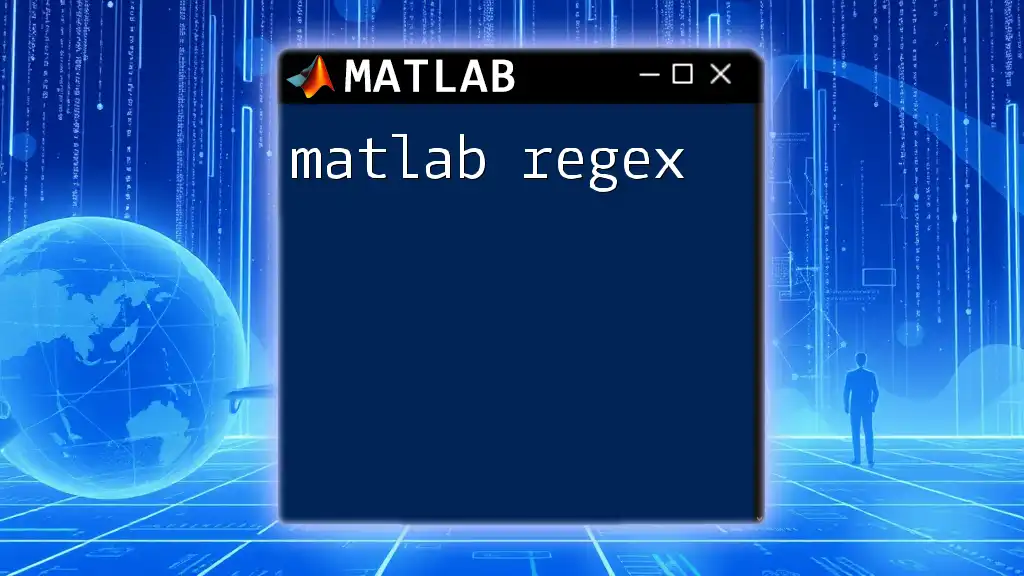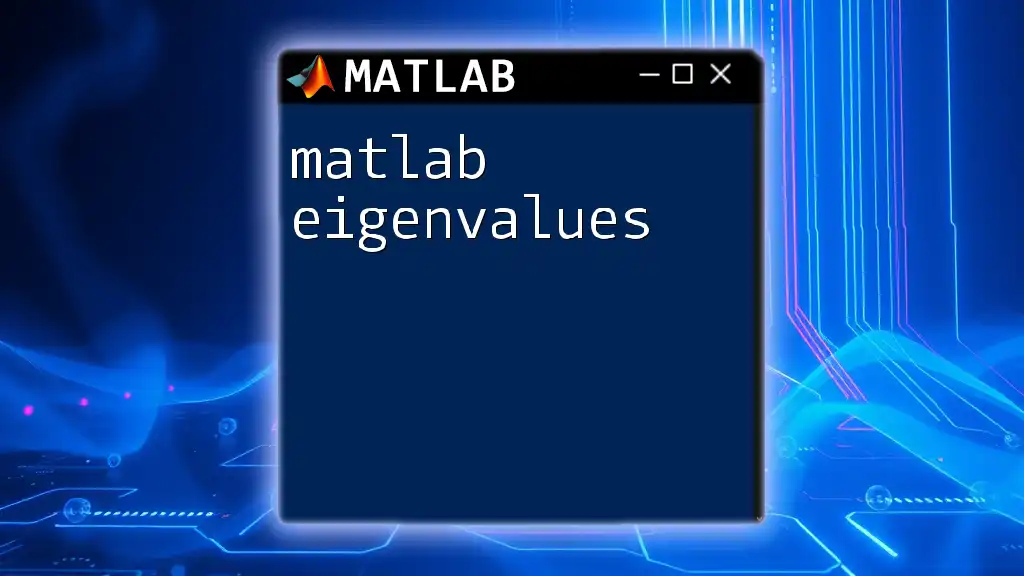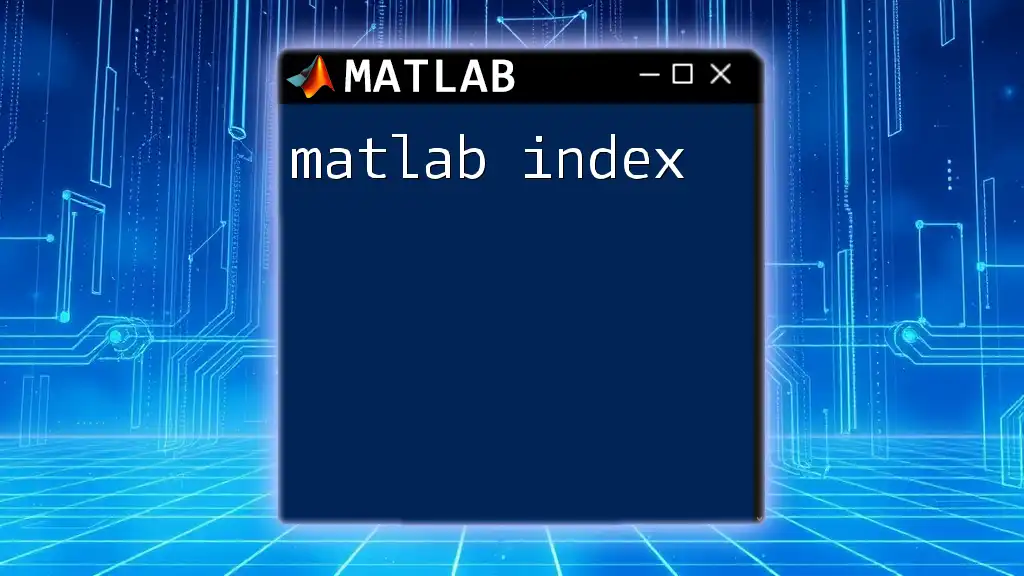MATLAB's regular expression functions allow users to search, match, and manipulate strings using pattern matching, enabling powerful text processing capabilities.
Here's a simple example of using regex in MATLAB to find all occurrences of the word "data" in a string:
str = 'The data is located in the dataset containing various data points.';
matches = regexp(str, 'data', 'match');
disp(matches);
Understanding Regular Expressions in MATLAB
Regular expressions, commonly known as regex, are a powerful tool for searching and manipulating strings. In MATLAB, regex is an essential part of text processing and data analysis. It allows users to specify complex search patterns to find, match, and replace text in flexible ways.
Overview of MATLAB’s Regex Functions
MATLAB provides several key functions for working with regex, including:
- `regexp`: This function searches for a specified pattern within strings and returns the matching indices, tokens, or position.
- `regexpi`: Similar to `regexp` but performs case-insensitive matching.
- `regexprep`: Used for replacing specific patterns in strings with new text.
- `regextranslate`: Converts regex syntax from one language to another, helping users apply their knowledge across environments.
Each of these functions serves its unique purpose and can be utilized in a variety of contexts.

The Anatomy of a Regular Expression
Basic Syntax of Regular Expressions
At its core, a regex pattern is a sequence of characters that define a search pattern.
- Literal Characters: These are the actual characters to match in the text. For example, the regex `'apple'` will match the word "apple".
- Special Characters: These characters have unique meanings:
- `.`: Matches any single character.
- `*`: Matches zero or more repetitions of the previous character.
- `+`: Matches one or more repetitions.
- `?`: Matches zero or one of the previous character.
- `[]`: Used to specify a set of characters to match.
- `()`: Specifies a group.
- `{}`: Specifies the exact number of times to match.
Example: The regex `b.n` will match "bat", "ban", "b5n", etc., where any character replaces the dot.
Character Classes
Character classes allow you to match a specific set of characters.
- Predefined Classes: Commonly used in regex:
- `\d`: Matches any digit (equivalent to [0-9]).
- `\w`: Matches any word character (letters, digits, underscores).
- `\s`: Matches any whitespace character (spaces, tabs, line breaks).
Example: To match a simple phone number format (e.g., `123-456-7890`), you might use the regex pattern `\d{3}-\d{3}-\d{4}`.
Anchors and Boundaries
Anchors help to identify positions in the text rather than the actual content.
- `^`: Asserts position at the start of a line.
- `$`: Asserts position at the end of a line.
- `\b`: Represents a word boundary, useful for matching whole words.
Example: The pattern `^Hello` will match any string that starts with "Hello", while `world$` will match strings that end with "world".

Working with MATLAB Regex Functions
Using `regexp`
The `regexp` function is used to search through strings. Its syntax is:
[c, loc] = regexp(str, pattern, 'match')
- `str`: Input string or array of strings.
- `pattern`: The regex pattern you want to use.
- `'match'`: Specifies that you want the matched characters returned.
Example: Extracting digits from a string.
str = 'Room 205 is on the second floor.';
pattern = '\d+'; % Matches one or more digits
matches = regexp(str, pattern, 'match')
Here, `matches` will contain `{'205'}`.
Using `regexpi`
`regexpi` is used for case-insensitive matching. Its syntax is similar to `regexp`.
matches = regexpi(str, pattern, 'match')
Example: Finding 'math' regardless of case sensitivity.
str = 'Math and math are different subjects.';
pattern = 'math';
matches = regexpi(str, pattern, 'match')
In this case, `matches` will yield `{'Math', 'math'}`.
Using `regexprep`
The `regexprep` function is intended for replacing matched patterns. Its syntax is:
newStr = regexprep(str, pattern, replaceWith)
Example: Cleaning text by removing digits from a string.
str = 'Room 205 is on the second floor.';
newStr = regexprep(str, '\d+', ''); % Remove all digits
So, `newStr` will become `'Room is on the second floor.'`.
Using `regextranslate`
`regextranslate` is beneficial for users transitioning between languages. It helps make regex patterns optimal for MATLAB from other languages.
Example: Translating a Python regex pattern to MATLAB.
pythonPattern = r'\w+';
matlabPattern = regextranslate(pythonPattern, 'Python', 'MATLAB');
The translation results in a MATLAB-compatible regex pattern, which can be tested and used seamlessly.
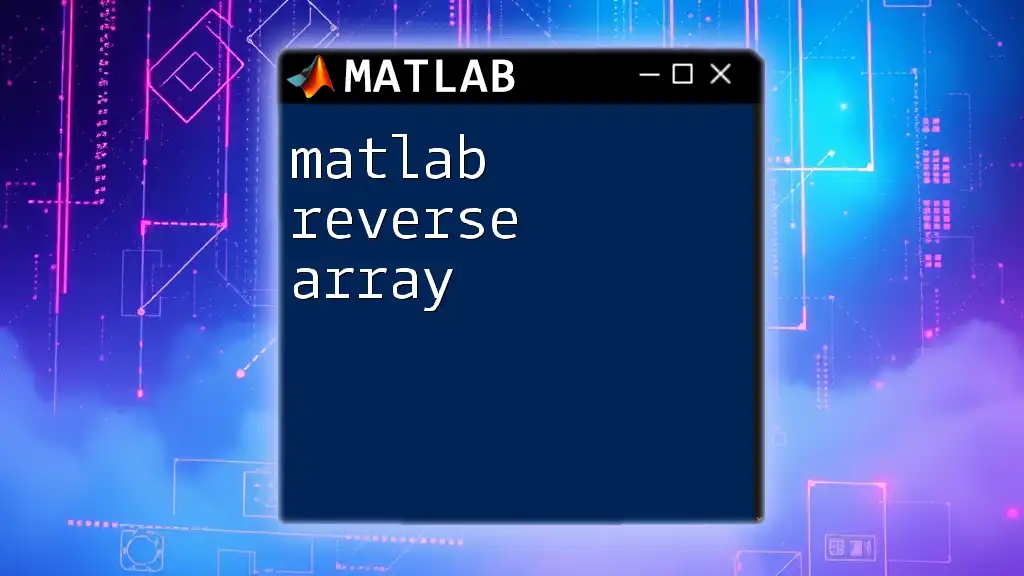
Advanced Regex Techniques
Grouping and Capturing
Grouping and capturing allow you to isolate parts of the match. You use parentheses to group expressions.
Example: Extracting different parts from a date string.
str = 'Today is 2023-10-25.';
pattern = '(\d{4})-(\d{2})-(\d{2})'; % Grouping the year, month, day
[~, ~, tokens] = regexp(str, pattern, 'match', 'split', 'tokens');
year = tokens{1}{1}; % Extract year
month = tokens{1}{2}; % Extract month
day = tokens{1}{3}; % Extract day
Lookaheads and Lookbehinds
Lookaheads and lookbehinds are zero-width assertions that allow for patterns to be matched only if followed or preceded by another pattern.
Example: Using a positive lookahead to find a word that is followed by a specific character.
str = 'I love apples and oranges.';
pattern = 'apple(?=s)'; % Matches 'apple' only if it is followed by 's'
matches = regexp(str, pattern, 'match');
Example: Using a negative lookbehind to find characters not preceded by a specific character.
pattern = '(?<!\s)orange'; % Matches 'orange' not preceded by whitespace
matches = regexp(str, pattern, 'match');
Non-greedy Matching
MATLAB regex defaults to greedy matching, meaning it will match as much text as possible. However, you can create non-greedy patterns by appending a `?` after the quantifier.
Example: Compare greedy and non-greedy matching.
str = 'abcXYZdefXYZghi';
greedyPattern = 'X.*?Z'; % Non-greedy to match up to the first 'Z'
greedyMatch = regexp(str, greedyPattern, 'match'); % Matches 'XYZdefXYZ'
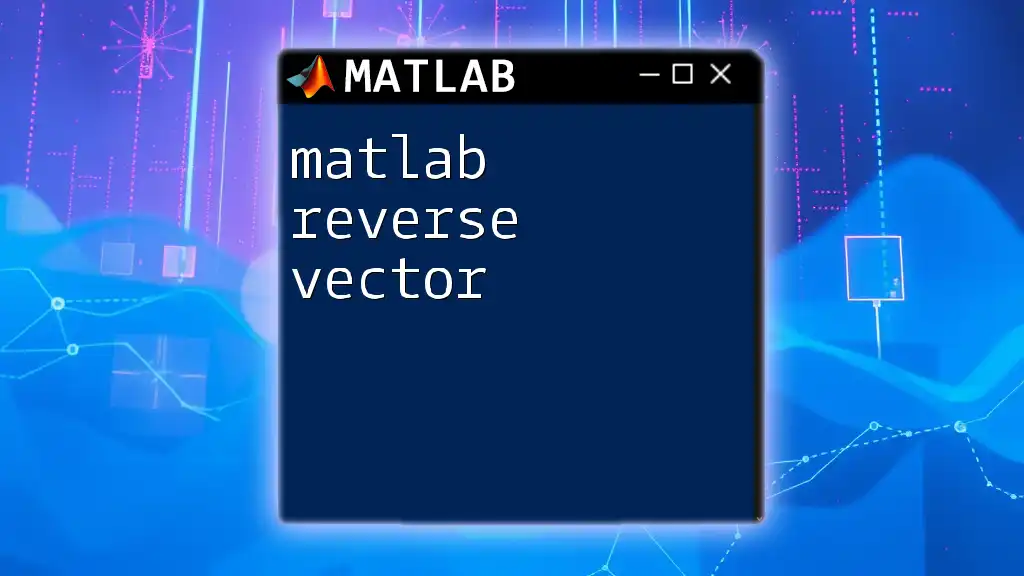
Practical Applications of MATLAB Regex
Data Cleaning
Regex is invaluable for cleaning datasets. Many raw data strings contain unwanted characters that need to be removed or replaced.
Example: Cleaning emails by removing leading/trailing spaces and non-email characters.
emails = {' test@example.com ', 'invalid-email@'};
cleanEmails = regexprep(emails, '^\s*|\s*$', ''); % Remove spaces
cleanEmails = regexprep(cleanEmails, '[^a-zA-Z0-9@._-]', ''); % Remove invalid chars
Text Analysis
With regex, users can extract meaningful data from text, enabling advanced text analysis.
Example: Extracting hashtags from tweets.
tweet = 'Loving the #MATLAB and #Regex tools!';
pattern = '#\w+'; % Matches hashtags
hashtags = regexp(tweet, pattern, 'match');
Validation of Input Data
Validation is crucial for ensuring that input data meets specific criteria. Regex can be used to enforce valid patterns.
Example: Validating email addresses.
email = 'example@domain.com';
pattern = '^[\w.-]+@[\w.-]+\.[a-zA-Z]{2,}$'; % Basic email regex
isValid = ~isempty(regexp(email, pattern, 'once'));

Tips and Best Practices for Working with Regex in MATLAB
Common Pitfalls
Beginners often make mistakes, such as:
- Forgetting to escape special characters (e.g., `.` must be `\.`)
- Confusing greedy vs. non-greedy matching
- Overusing regex for simple tasks that can be accomplished with simpler string functions
Performance Considerations
While regex is powerful, it can be less efficient with large datasets. Optimize your regex patterns for faster execution by:
- minimizing backtracking
- avoiding unnecessary capturing groups
- pre-compiling regex patterns when possible

Conclusion
In this guide, we explored the ins and outs of MATLAB regex, covering fundamental concepts, advanced techniques, and practical applications. Regex can significantly enhance your text processing capabilities in MATLAB, whether for data cleaning, validation, or analysis. To master regex, it's essential to practice regularly and apply your skills in real-world scenarios.

Additional Resources
MATLAB Documentation
Visit MATLAB's official documentation for comprehensive details on regex functions and syntax.
Online Communities and Tutorials
Engage with online forums and tutorials that provide further insights and hands-on practice with regex.
Tools for Testing Regular Expressions
Utilize regex testing tools and environments to experiment with regex patterns before implementing them in your MATLAB code.

